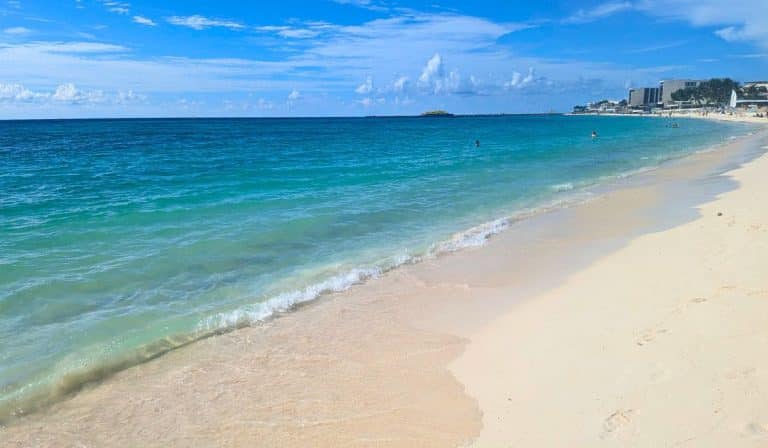Cancún, Q.R. (October 2025) — After a summer of record seaweed influxes, Cancún and the Riviera Maya are now entering what experts and local monitors describe as the tapering phase of the 2025 sargassum season. With conditions expected to improve steadily through October, tourism stakeholders and travelers alike are watching for signs of a return to the pristine Caribbean waters the region is known for.
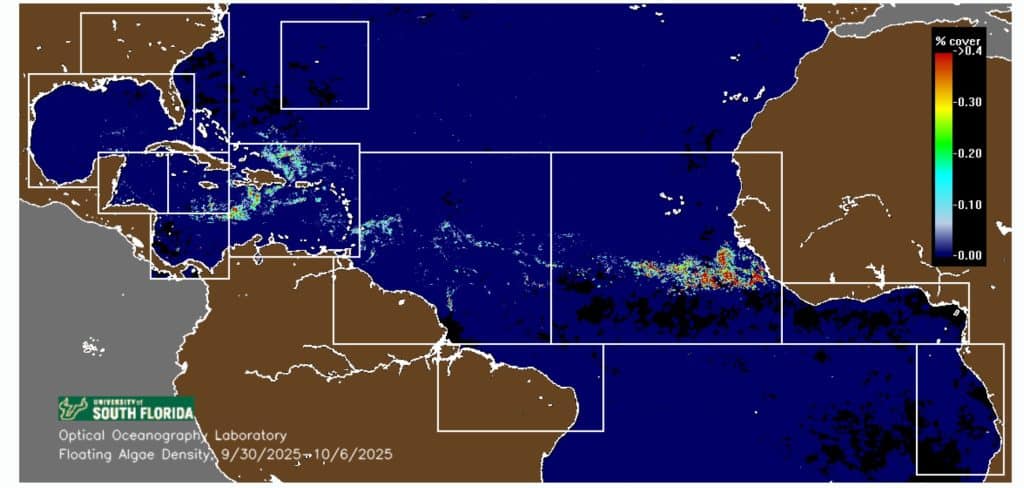
Record Season, Then a Promising Decline
The 2025 sargassum season has already broken records: as of early September, Cancún alone reported gathering over 13,000 tons of seaweed—nearly four times the quantity collected during the same period last year.
Statewide, more than 76,000 tons have been removed this year under the Mexican Caribbean’s expanded mitigation strategy. In southern Quintana Roo, crews collected over 400 tons in a six-day stretch (Sept. 20–26) in Costa Maya, even as northern beaches around Cancún saw a notable drop in new arrivals.
Despite the intense season, municipal and state authorities are reporting that sargassum landings have “significantly decreased” in recent weeks, marking a clear shift in the pattern.
October 2025 Photo Reports from Cancun and The Region
(Source: Mexico Sargassum Seaweed Updates (Cancun, PDC, Tulum, etc.) )
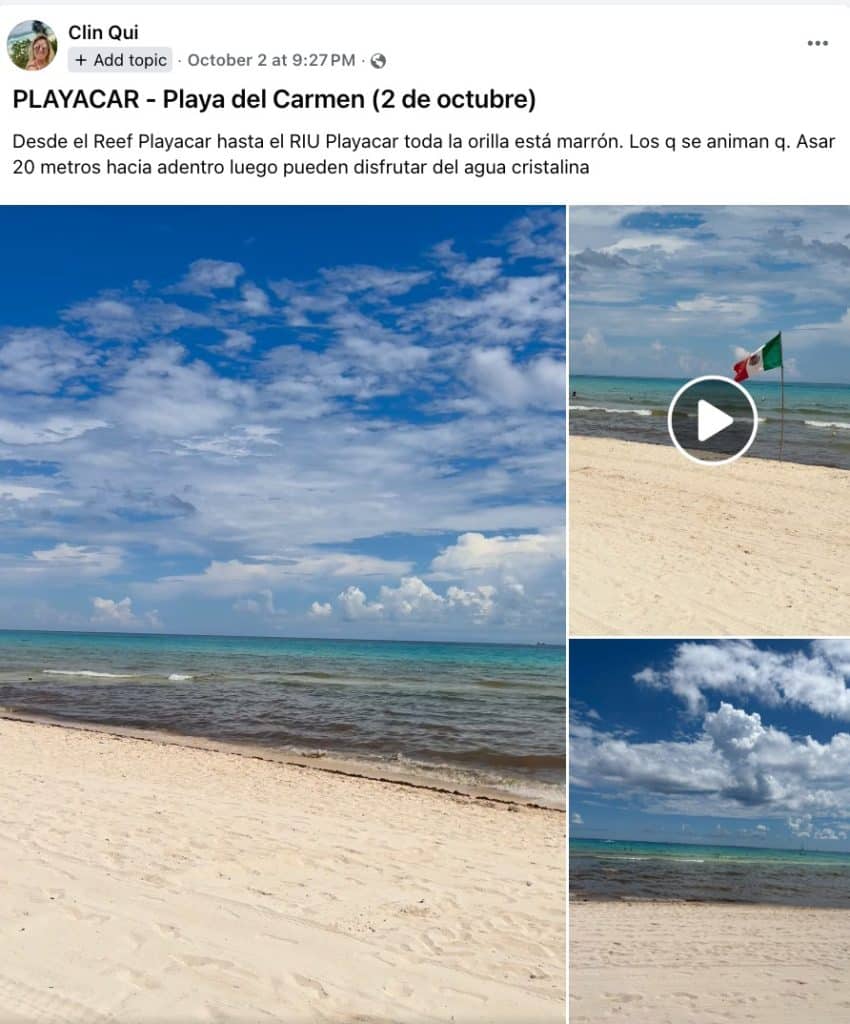
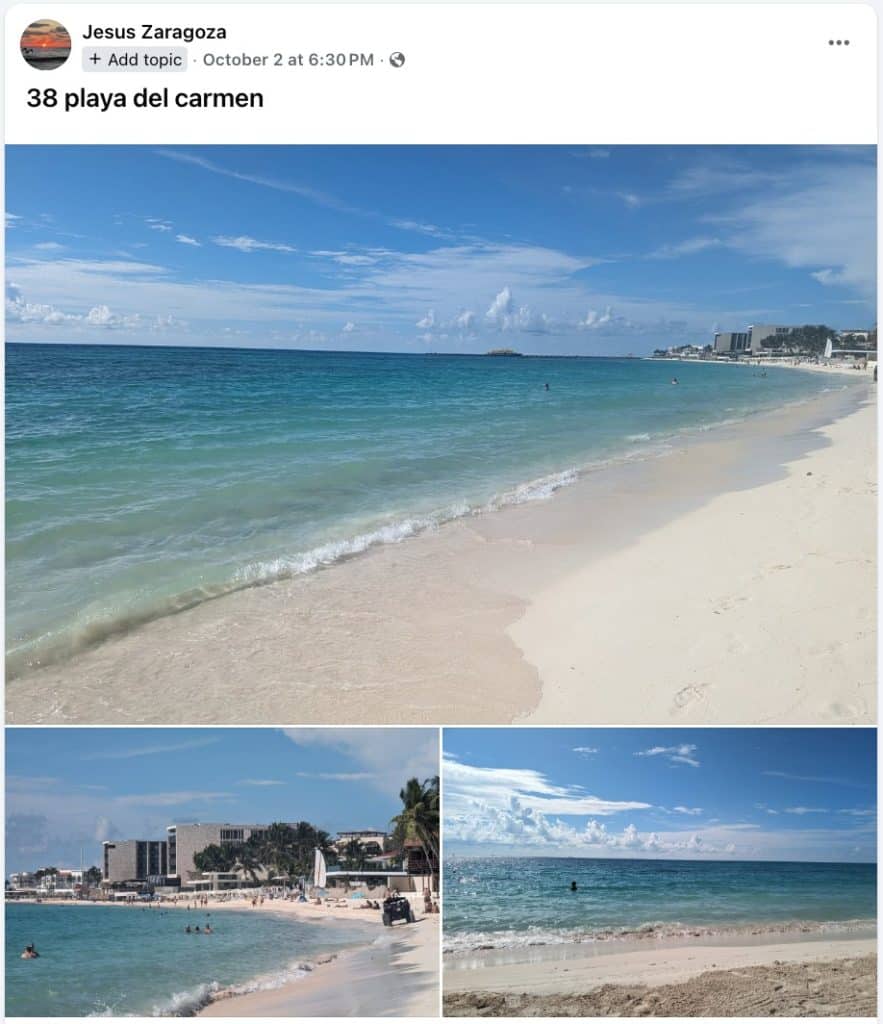
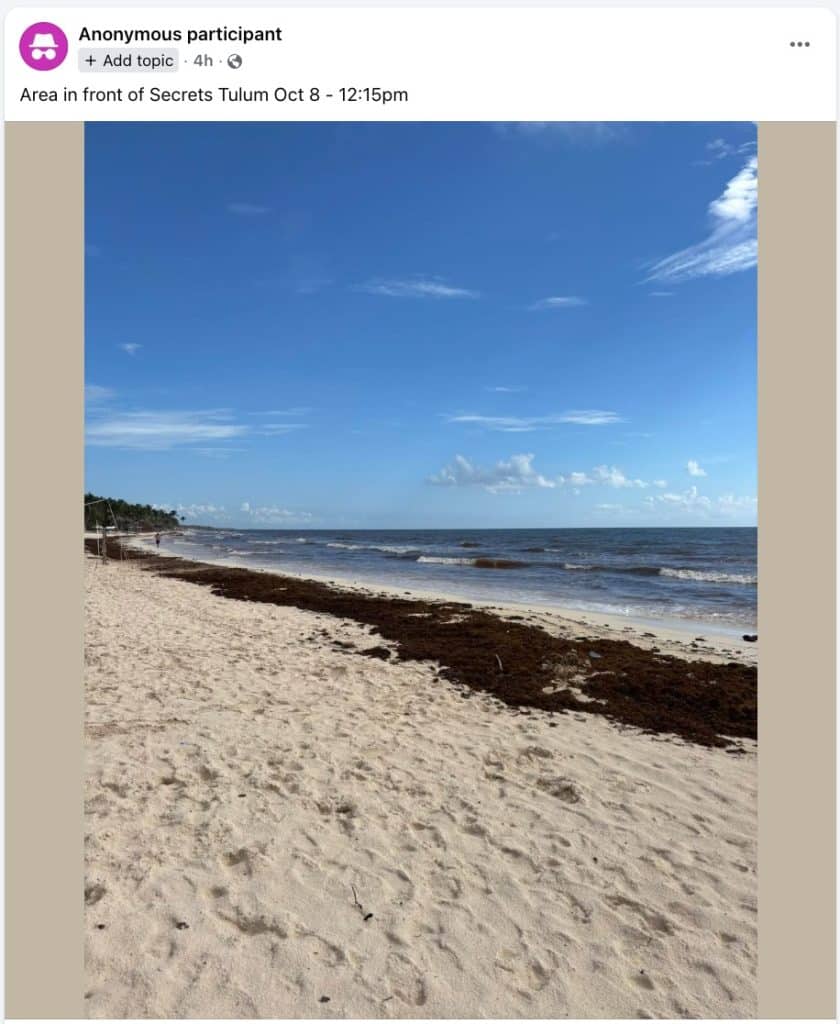
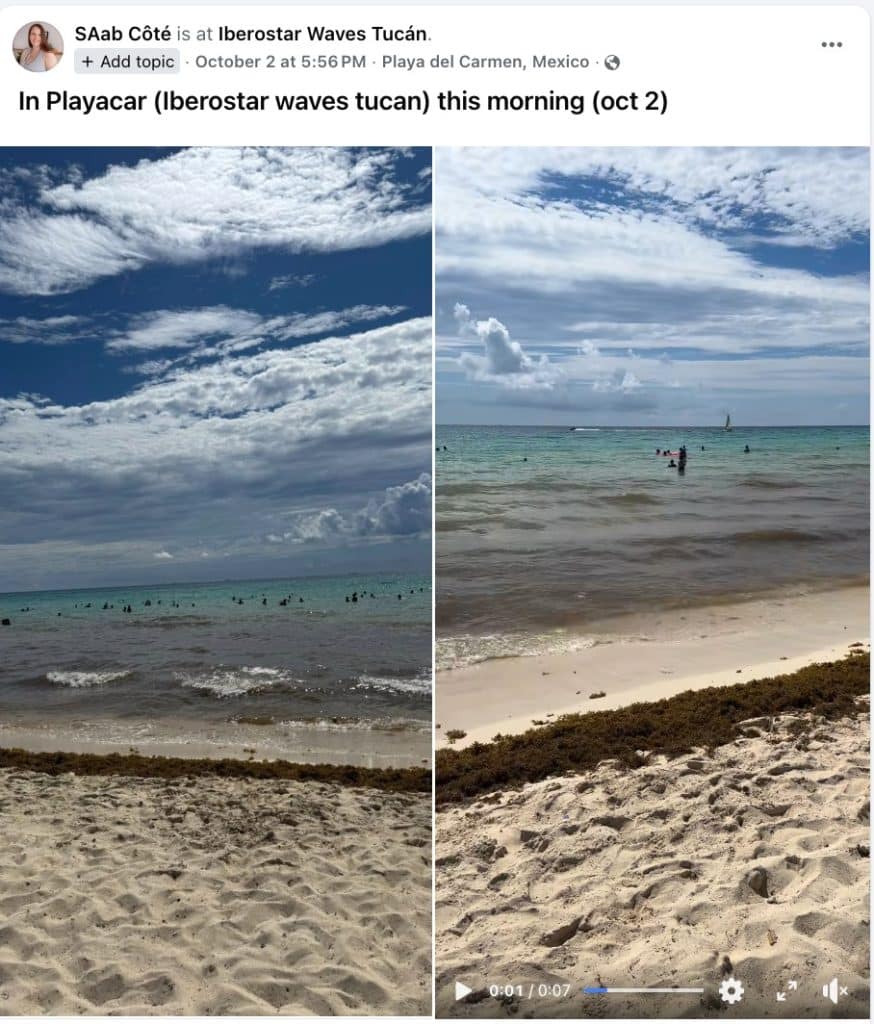
Why October Marks a Turning Point
Cancún’s sargassum season typically runs from April through October, peaking between May and July, with the heaviest landings sometimes extending into early fall.
By late October, most historical and predictive models suggest the sargassum influx subsides, barring extreme weather events.
This year, local observers and “beach-front intelligence” are already seeing signs of that tapering process:
- In the first half of October, clean water zones are increasingly frequent in the Hotel Zone, with minor amounts of seaweed only on the shore rather than in the surfline.
- By mid-October, floating fragments become sporadic, and beach cleaning crews can keep the shoreline largely clear.
- In the third week (Oct. 20–26), most tourist areas expect conditions akin to “post-season,” with minimal seaweed and largely unobstructed swimming.
- By the final week (Oct. 27–31), barring weather reversals, beaches are likely to be in prime, clear condition — signaling the effective end of the season.
This week-by-week framework aligns with patterns reported by local monitoring sources and tourism observers.
Still, warnings remain: a late-season wind shift or tropical disturbance could briefly push patches back ashore. Travelers are advised to check updates via the Red de Monitoreo del Sargazo de Quintana Roo, which issues daily alerts and maps via social media.
Local Mitigation & Resilience Efforts
The 2025 season spurred a heavier investment in sargassum control than in prior years. In Cancún alone, some 13,000+ tons were collected by municipal crews. The state government of Quintana Roo also allocated more than 125 million pesos (approx. several million USD) toward mitigation efforts, including floating barriers, offshore removal, and shoreline cleaning.
Technological and scientific initiatives are also underway. Researchers from UNAM and other institutions advocate for processing the seaweed into biofuels or bioplastics, though challenges remain in toxin removal, heavy-metal contamination, and cost viability. The state is planning a “circular economy” facility to convert sargassum into usable energy or materials
At the same time, containment barriers, daily beach crews, high-frequency monitoring, and aerial (satellite) surveillance are core components of the local strategy to reduce onshore impacts and preserve the tourist experience.
What Travelers Should Know in Fall 2025
- October is a sweet spot. While conditions will not be perfect on day one, the month offers a high probability of clean beach days — far better odds than in summer.
- Expect variability — an unexpected wind pattern or tropical wave can deliver isolated patches of sargassum, even late in the season.
- Choose beaches wisely. The Hotel Zone, Isla Mujeres, and certain Riviera Maya stretches generally recover faster. Some beaches in Puerto Morelos or southern sectors may see later arrivals.
- Have backup plans. In case a beach day is impacted, options include cenote tours, archaeological excursions (Chichén Itzá, Tulum, Cobá), inland adventures, or catamaran snorkeling in open water (beyond sargassum lines).
- Stay informed. The Red de Monitoreo del Sargazo often publishes daily maps and alerts.
- Consider late-Fall or Winter travel. Once November begins, sargassum arrivals are rarer, giving travelers the best chance at classic Caribbean clarity and fewer weather risks.
Looking Ahead & Broader Context
The 2025 sargassum season will likely be remembered as one of the most challenging to date—but also one in which adaptation, monitoring, and mitigation efforts were scaled up aggressively.
Scientists warn that climate change, nutrient runoff, shifting Atlantic currents, and warming ocean conditions may continue to intensify these blooms in coming years. Cross-nation initiatives, such as Mexico and the Dominican Republic proposing bilateral coordination on sargassum, signal the growing recognition of the problem’s regional scale.
For Cancún, the silver lining is that October is shaping up as a transitional month of resurgence. Travelers arriving later this month or in early November have a strong chance of enjoying clear waters, white sands, and the vivid Caribbean blue that draws visitors year after year.

